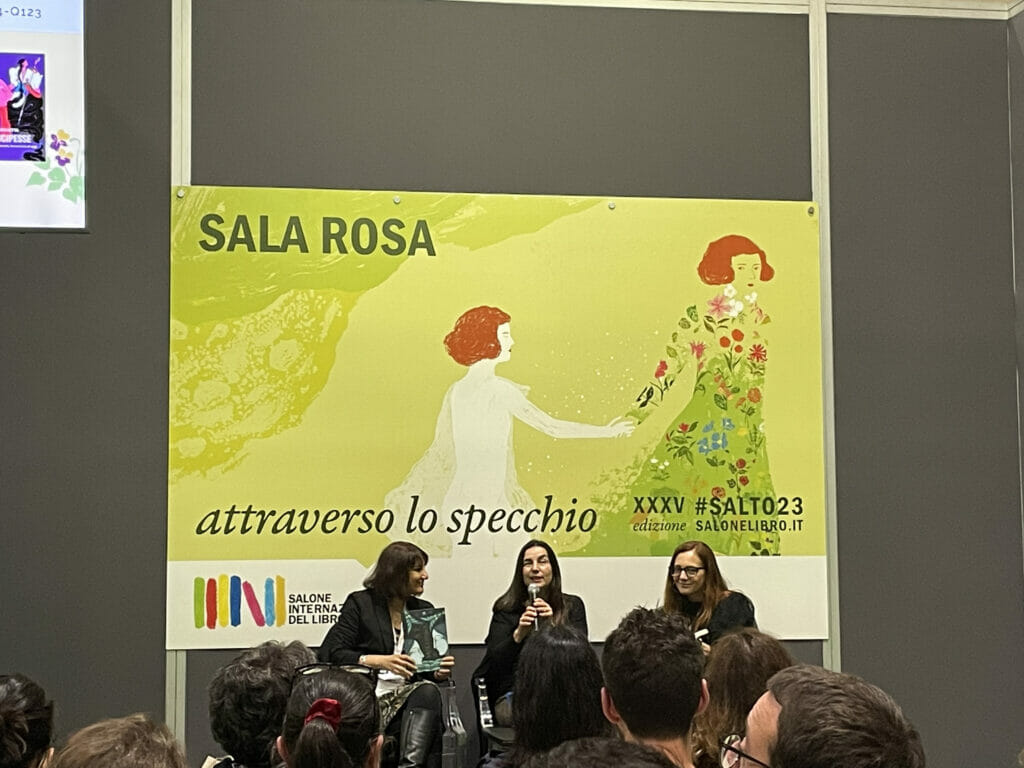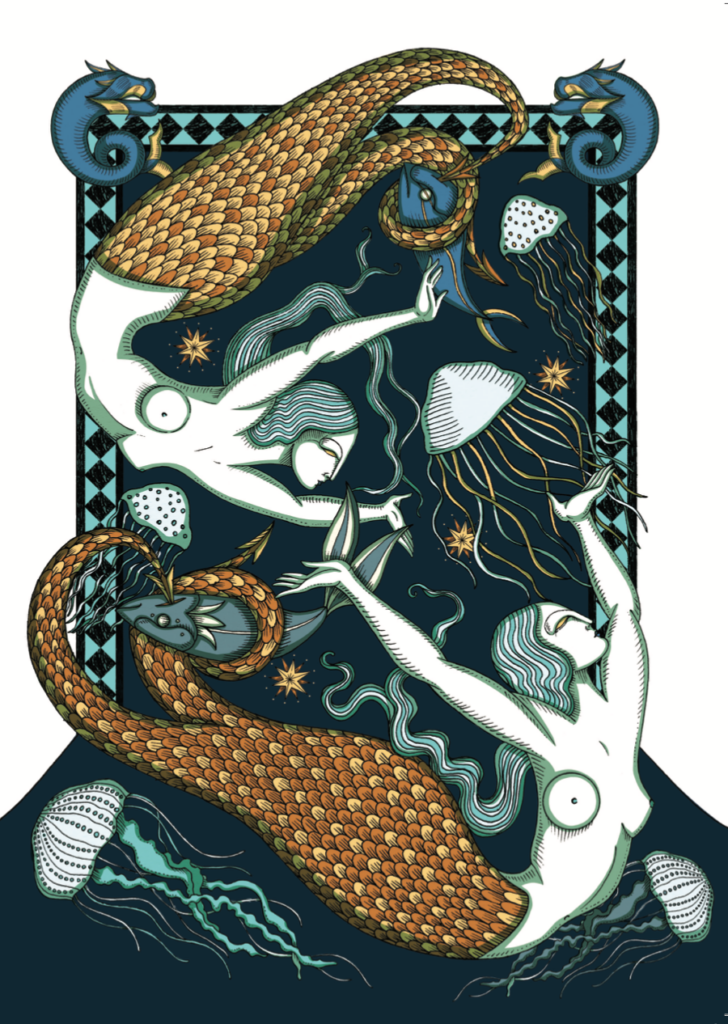
Stepping through the looking glass of popular perception and received stereotype was just one approach taken by some of the authors appearing at this year’s Salone del Libro, and Giusy Marchetta, Laura Pugno, and Francesca Sensini went head to head with popular portrayals of female stereotypes and archetypes when they presented their works on Saturday the 20th: Principesse, Eroine del passato, femministe di oggi, Melusina and La trama di Elena.
Elena’s plot: a subversive point of view
At the Sala Granata Francesca Sensini presented her new book, called La trama di Elena, or Elena’s Web, published by Ponte delle Grazie. The event was called: Classici Sovversivi- Special Edition. La trama di Elena. Talking to the award-winning Italian author and playwrite Valeria Parella, she threw accepted sterotypes of the femme fatale up into the air. She took a philological approach to investigating myths prevalent in the West about Elena, who in Greek mythology was the cause of the Trojan War. But as opposed to Homer’s approach, she told it in a different way by allowing Elena to be heard in the first-person, turning her from object of desire to the desiring one.
She weaves her web, which in Italian translates as “trama”. The term in Italian indicates both a story and the act of loom weaving, displaying the semantic double-entendre of the way the word is used. Elena has as her mascot the doll of Artemide as well as a mirror, which she needs to understand and explain to herself who she is. This moment of reflection is also a moment of metaphorical reflection, itself playing on the theme title of the Book Fair.
But most important of all is how Elena is presented in this book as a self-sufficient figure. She doesn’t need anyone, yet everyone needs her. A metaphor for this is her birth from the colored egg of a swan. A one-of-a-kind wisteria-colored egg, hatched by the body of a woman. And Elena like an egg hatches herself, being her own self-contained heroine. In the final scheme of things, Elena in this book is no longer guilty of having unleashed a war, and instead the cause of it lies in men’s desire for wealth and conquest.
Melusine and Principesse: transforming stereotypes
On the same day, at Sala Rosa, there was the event called Melusine e Principesse. Il mito come utopia, la metamorfosi come pratica femminista, or Mermaids and Princesses – the myth as utopia, and metamorphosis as feminist practice. Giusi Marchetta and Laura Pugno presented their books. Principesse, Eroine del passato, femministe di oggi (add editor) and Melusina (Hacca editions) with illustrations by Elisa Seitzinger. They discussed fairytale princesses, marketing stereotypes, anti-feminist icons, and protagonists of stories there to be rewritten for the new generation.

Giusi Marchetta, Laura Pugno and Elisa Seitzinger at Torino Book Fair 2023.
The new princesses of the 90s
In Principesse Giusi Marchetta traces the archetype of the princess, which includes aesthetic perfection, and the imperative of marriage as a key to living happily ever after. A recurring theme in the passage to maturity of some women from a young age, it is sometimes accompanied by the repetitive echoes of sexism and homophobia. She also shows how cinema and television, from the end of the 1990s and the 2000s tried to transform and renovate the traditional stereotype of the princess through Buffy the Vampire Slayer, a drama television series from 1997, and Xena: Warrior Princess, a fantasy television series that came out in 1995.
Buffy combines the archetypes of the princess and the huntress. In her coexists the supposedly ‘normal’ part that does ‘girl things’ and the ‘monstrous’ part that hunts down demons and has a great responsibility to the world. Xena is already a princess, but not in the traditional way. She twice confounds expected stereotypes since she is a warrior and she also has a girlfriend, Gabrielle, thus presenting a gay sub-plot.
Re-proposing the mermaid archetype
Melusina by Laura Pugno, however, with its almost esoteric and medieval illustrations by Elisa Seitzinger, draws up from the reservoir of an ancient medieval French legend the tale of Melusina, who is a kind of mermaid. Pugno restores a voice to Hans Christian Andersen‘s The Little Mermaid, which it had lost in the original fairy tale. Pugno reinterprets the Roman de Mélusine written in 1378 by Jean d’Arras. Melusina, a beautiful fairy who when bathing turns into a snake, marries the king’s son. The marriage proceeds well, and Melusina brings much wealth to her husband until he contravenes the pact not to enter her room when she is bathing. She abandons him and returns to the depths. There, freed from convention she becomes her own wild, free, and ‘monstrous’ version.
The illustrations, inspired by the azure blue of the Cycladic Islands and Seitzinger’s native Val d’Ossola, are characterized by timeless anachronism and strong symbolism. In fact, only in the last plates does Melusina have a face and a body because she is finally free.

Illustration by the book Melusina, Laura Pugno, Hacca editions, 2023.
Destroying the feminine stereotypes
The authors of Principesse and Melusina believe that there is the need to renew the archetype of the traditional princess, introducing new characters and drawing on different archetypes such as the Siren. Their characters manage to be what they want outside of a marriage or domestic life, giving in, sacrificing or conforming to their husbands or to social conventions.
In the end, Elena, Emma, Xena, and Buffy are all heroines who manage, by taking on the world instead of being bowed to it, whether or not with family or the benediction of love, to finally become authentically themselves. In this way they come in touch with their ‘monstrous’ and dark side that female stereotypes have forced them to hide.







